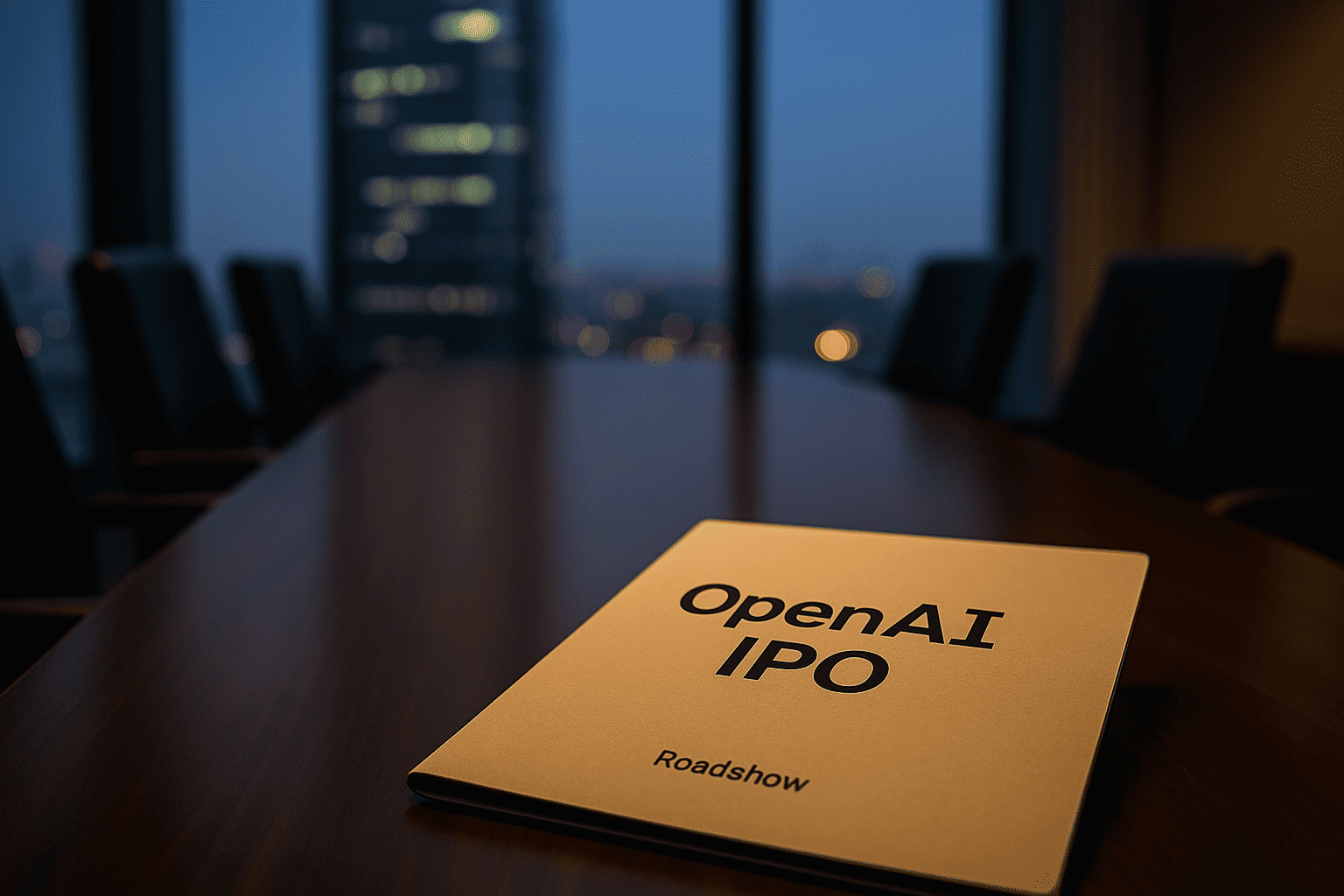OpenAI Lays Groundwork for $1 Trillion Juggernaut IPO
By Tredu.com • 10/30/2025
Tredu

What “juggernaut IPO” means and why it matters
OpenAI is preparing for an initial public offering that advisers say could value the company at up to $1 trillion as soon as the second half of 2026, with some scenarios extending to 2027. Early estimates point to a raise of at least $60 billion, positioning the listing among the largest on record. The plan follows a corporate overhaul that converted OpenAI’s for-profit arm into a public benefit corporation overseen by the OpenAI Foundation, a structure meant to align capital access with mission guardrails.
The new capital and control stack
Under the revamped pact, Microsoft holds a 27 percent stake, with model and product rights that extend to 2032, while OpenAI’s nonprofit foundation retains technical control over the group through its equity and governance role. The foundation’s stake is about 26 percent, with potential to increase based on milestones. The deal values OpenAI at roughly $500 billion today, creating a runway from a half-trillion private value toward a $1 trillion public mark.
Cloud spine: the Azure commitment
The partnership is anchored by a very large multiyear Azure commitment, widely reported around $250 billion over the life of the agreement. Microsoft no longer holds a right of first refusal on all future compute sourcing, yet the scale of contracted workloads effectively cements Azure as OpenAI’s primary platform. For investors evaluating an OpenAI $1 trillion IPO, that cloud spine underwrites model training, inference, and commercial reliability at scale.
Why the restructuring came first
Advisers argued that a clean public-benefit structure was a prerequisite to broadening the investor base and lowering governance risk. The revised framework clarifies fiduciary duties, sets an independent panel to verify any claim of reaching AGI thresholds, and reduces dependence on a single partner while preserving strategic ties. The change also simplifies the path to future acquisitions and joint ventures in safety, hardware, and enterprise tooling.
The IPO glide path: timing, size, and uses
A listing in 2026–2027 would coincide with another wave of model upgrades and new enterprise products. Proceeds, which could exceed $60 billion in base-case scenarios, are expected to fund data centers, accelerators, energy procurement, and selective M&A. With global AI demand expanding, OpenAI frames capital as a strategic resource to scale training runs, improve reliability, and deepen safety research.
Revenue momentum and the profitability question
Reports peg OpenAI’s 2025 revenue in the tens of billions, supported by API consumption, enterprise seats, and embedded services, even as heavy investments keep losses elevated. The valuation case assumes multi-year growth, rising software mix, and stronger margins as inference at scale narrows unit costs. The company’s $500 billion private mark and Microsoft’s 27 percent stake provide a reference as investors assess how the business steps toward a $1 trillion IPO outcome.
Competitive field and ecosystem gravity
Rivals are racing with custom silicon, model stacks, and closed-loop verticals. OpenAI’s counter is ecosystem gravity: developer mindshare, model cadence, and enterprise integrations across productivity, search, and security. The Azure pact through 2032 adds supply certainty for accelerators and networking, which helps smooth deployment risk during peak demand windows. That mix is central to sustaining a premium multiple into and after a juggernaut IPO.
Governance, safety, and the AGI panel
The public-benefit charter formalizes trade-offs between speed and safety. An independent AGI verification panel is designed to arbitrate milestone claims, reducing disputes over rights and revenue triggers tied to model capability. Critics question whether foundation oversight can resist commercial pressure, but the framework at least makes responsibilities explicit, a factor public investors will price into risk assessments.
Microsoft’s calculus at 27 percent
For Microsoft, a 27 percent position, long-dated rights, and the Azure workload spine offer durable economic upside without exclusivity optics that might draw regulatory heat. The structure lets OpenAI court other partners in select areas, while Azure still captures the bulk of training and inference. For OpenAI, the balance trades some control for scale and stability, a combination IPO investors typically reward.
What could derail the $1 trillion case
Three risks stand out. First, supply and power bottlenecks that delay cluster rollouts, pushing revenue to the right. Second, policy shifts on export rules, data localization, or safety regulation that restrict addressable markets. Third, competition that compresses model pricing or accelerates customer diversification. Any of these could force estimates lower and challenge the OpenAI targets for a $1 trillion IPO in 2026–2027.
What would validate the thesis
To cement the narrative, investors will look for backlog visibility into 2027, enterprise renewal rates that lift net revenue retention, and evidence of software mix expanding margins. A steady cadence of model and safety releases, paired with on-time data center delivery under the Azure pact through 2032, would turn today’s groundwork into a durable public-market story.

How to Trade Like a Pro
Unlock the secrets of professional trading with our comprehensive guide. Discover proven strategies, risk management techniques, and market insights that will help you navigate the financial markets confidently and successfully.


